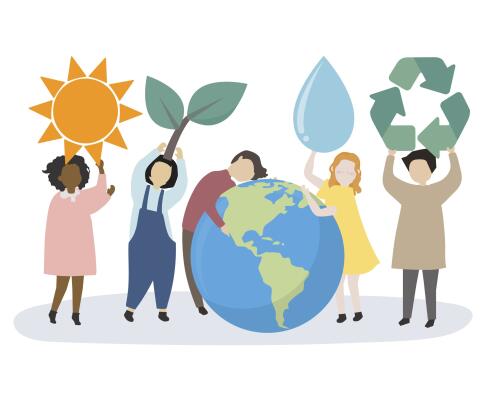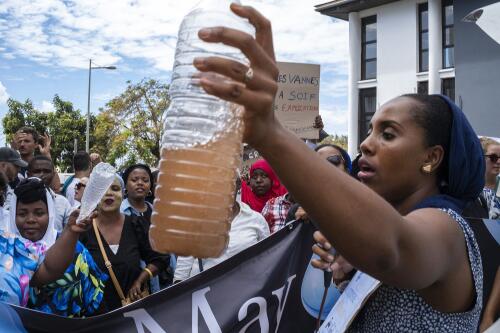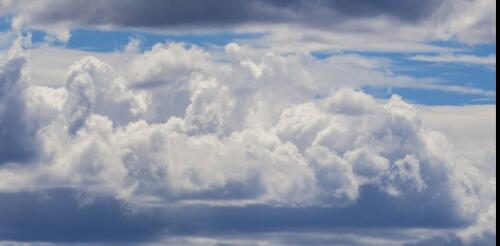Climate
Wildfires and severe drought are killing trees at an alarming rate across the West, and forests are struggling to recover as the planet warms. However, new research shows there are ways to improve forests’ chances of recovery – by altering how wildfires burn. In a new study, we teamed up with over 50 other fire ecologists to examine how forests have recovered – or haven’t – in over 10,000 locations after 334 wildfires. Together, these sites offer an unprecedented look at how forests respond to wildfires and global warming. Our results are sobering. We found that conifer tree seedlings, such as Douglas-fir and ponderosa pine, are increasingly stressed by high temperatures and dry conditions in sites recovering from wildfires. In some sites, our team didn’t find any seedlings at all. That’s worrying, because whether forests recover after a wildfire depends in large part on whether new seedlings can establish themselves and grow. However,...
About a decade ago, as frontline-led environmental justice groups came together to create a new center of gravity in the climate movement, a group of climate justice leaders, including me, began connecting with the staff and trustees of the Chorus Foundation, which was developing its own strategy on climate funding. After discovering our shared goals and realizing that we needed each other to achieve them, our movement groups formed deep partnerships with Chorus trustees and staff. For Chorus, what began as an effort to move money to an emerging climate justice ecosystem blossomed into deeper relationships and a coordinated funder organizing effort by and with the entire movement ecosystem. The practices, approaches, and strategies developed as part of this relationship-building process among movement groups, Chorus, and other funders hold many lessons for how funders can build meaningful relationships with movement groups to inform their own strategies, and how...
When Racha Mousdikoudine opens her kitchen faucet, she never knows what will happen. “Maybe I won’t get any water at all,” she told CNN. “Maybe I’ll get 30 minutes of water. Maybe the water will only come after hours of waiting.” For the last four months, Mousdikoudine and her two children have had little or no running water in their home on the French territory of Mayotte, and island of around 310,000 people in the Indian Ocean off the eastern coast of Africa, between Mozambique and the island of Madagascar. Mayotte is facing an unprecedented water crisis amid one of the worst droughts in its history, as the impacts of the human-caused climate crisis collide with a chronic lack of investment in the water system. The island is grappling with its worst drought since 1997. Its two water reservoirs have reached a “critical level of decline” – one is at 7% of capacity and the other at 6%, according...
The year 2022 will be remembered across the U.S. for its devastating flooding and storms – and also for its extreme heat waves and droughts. The nation saw 18 disasters that caused more than US$1 billion in damage each, well above the average. The year started and ended with widespread severe winter storms from Texas to Maine, affecting tens of million of people and causing significant damages. Then, March set the record for the most reported tornadoes in the month – 233. During a period of five weeks over the summer, five 1,000-year rainfall events occurred in St. Louis, eastern Kentucky, southern Illinois, California’s Death Valley and Dallas, causing devastating and sometimes deadly flash floods. Severe flooding in Mississippi knocked out Jackson’s troubled water supply for weeks. A historic flood in Montana, brought on by heavy rain and melting snow, forced large areas of Yellowstone National Park to be evacuated. In the fall, hurricanes Ian and Fio...
Clouds form when water vapor – an invisible gas in the atmosphere – sticks to tiny floating particles, such as dust, and turns into liquid water droplets or ice crystals. In a newly published study, we show that microplastic particles can have the same effects, producing ice crystals at temperatures 5 to 10 degrees Celsius (9 to 18 degrees Fahrenheit) warmer than droplets without microplastics. This suggests that microplastics in the air may affect weather and climate by producing clouds in conditions where they would not form otherwise. We are atmospheric chemists who study how different types of particles form ice when they come into contact with liquid water. This process, which occurs constantly in the atmosphere, is called nucleation. Clouds in the atmosphere can be made up of liquid water droplets, ice particles or a mixture of the two. In clouds in the mid- to upper atmosphere where temperatures are between 32 and minus 36 F (0 to minus 38 C), ice crystals...



